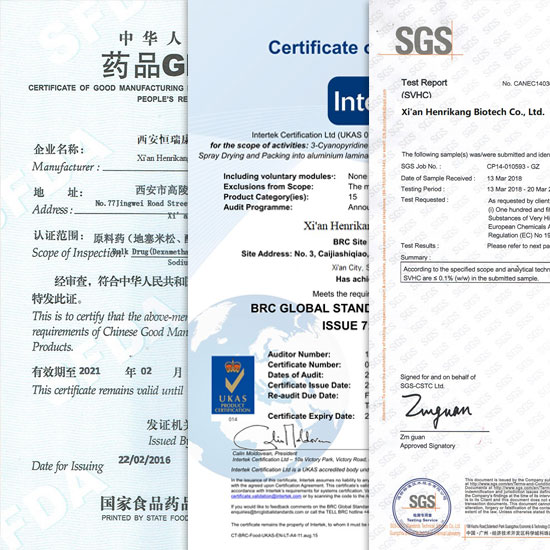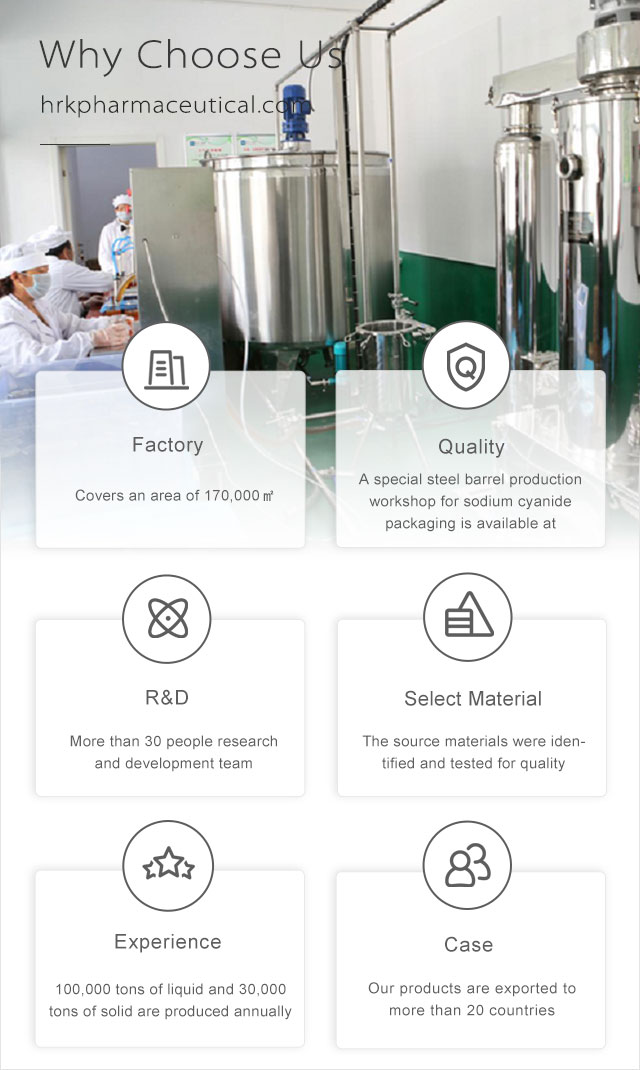





Related Attributes
Product details
The mechanism of action of miconazole nitrate: (1) interferes with the activity of cytochrome P450, inhibits the biosynthesis of ergosterol in fungal cell membrane, damages fungal cell membrane and changes its permeability, and causes important intracellular substances to leak out. (2) Inhibition of fungal triacylglycerol and phospholipid biosynthesis. (3) Inhibiting the activity of oxidase and peroxidase, resulting in excessive accumulation of hydrogen peroxide in cells, causing fungal submicrostructure degeneration and cell necrosis. (4) Candida albicans can inhibit the process of its transformation from spores to aggressive mycelia.
Drug interaction of Miconazole Nitrate.
(1) When combined with coumarin or indendione derivatives and other anticoagulants, can enhance the effect of such drugs, resulting in prothrombin time prolongation, patients should be closely observed, monitoring prothrombin time, adjust the dose of anticoagulants.
(2) Miconazole nitrate can increase the blood concentration of cyclosporine and may increase the risk of renal toxicity. When the two drugs are used together, the blood concentration of cyclosporine should be monitored.
(3) Rifampicin can enhance the metabolism of this product, increase liver toxicity, and reduce the blood concentration of this product when combined, leading to treatment failure. When combined with isoniazid, the blood concentration of this product can be reduced, so the above drugs should be used with caution.
(4) The combination of phenytoin sodium and miconazole nitrate can cause changes in the metabolism of the two drugs, and delay the peak time of this product, and the reaction should be closely observed when the two drugs are combined.
(5) When combined with hypoglycemic drugs, it can cause severe hypoglycemia due to inhibiting the metabolism of the latter.
(6) The combination with Cisaprid is contraindicated, because the combination inhibits the cytochrome P450 metabolic channel, which can lead to arrhythmia. Miconazole nitrate in combination with astimidazole or terphenadine also has the risk of arrhythmia, so it should also be avoided.

Pharmacological action of Miconazole Nitrate.
Miconazole nitrate, also known as daktarin, Daktarin, mycoconazole, miconazole, miconazole, miconazole, miconazole, is a synthetic 1-phenylidene imidazole derivative, belonging to the broad spectrum of Imidazole antifungal drugs, is a common drug for the treatment of skin tinea, contains no hormones, no side effects, and its main active ingredient is miconazole. Miconazole nitrate is now rarely used in China. Its antibacterial spectrum, antibacterial activity and mechanism of action are similar to clotrimazole. It can be used as a substitute for amphotericin B in the treatment of deep fungal infections. It is suitable for the treatment of systemic and disseminated infections caused by fungi such as Cryptococcus neoformans and candida alba. The oral absorption effect is poor, and after local administration, it mainly stays in the lesion site and is rarely absorbed into the body. It is distributed in various tissues and fluids in the body and can penetrate into inflamed joints, vitreous body and peritoneum, but its concentration is low in sputum and saliva, and it has poor penetration of the blood-cerebrospinal fluid barrier and is not easy to penetrate the blood-brain barrier. The plasma protein binding rate was 90%. It is mainly inactivated by liver metabolism as inactive metabolites. 14% to 22% of metabolites are excreted in urine, of which less than 1% is the original drug. 50% is excreted from feces in its original form. The half-life α phase is about 0.4 hours, the half-life β phase is about 2.1 hours, and the final half-life is 20 to 24 hours.
Product Methods of Bulk Miconazole Nitrate powder.
Why choose us?

HRK Factory

About Shipping

Pharmaceutical Intermediate manufacturers
©2022 Xi'an Henrikang Biotech Co., Ltd.,